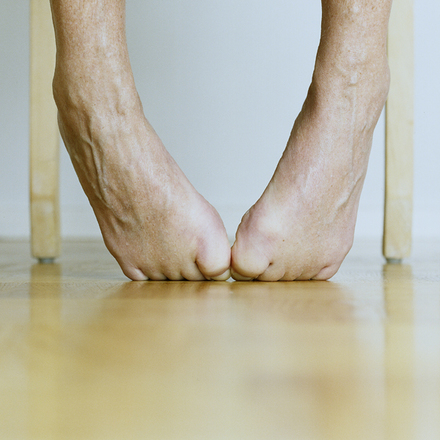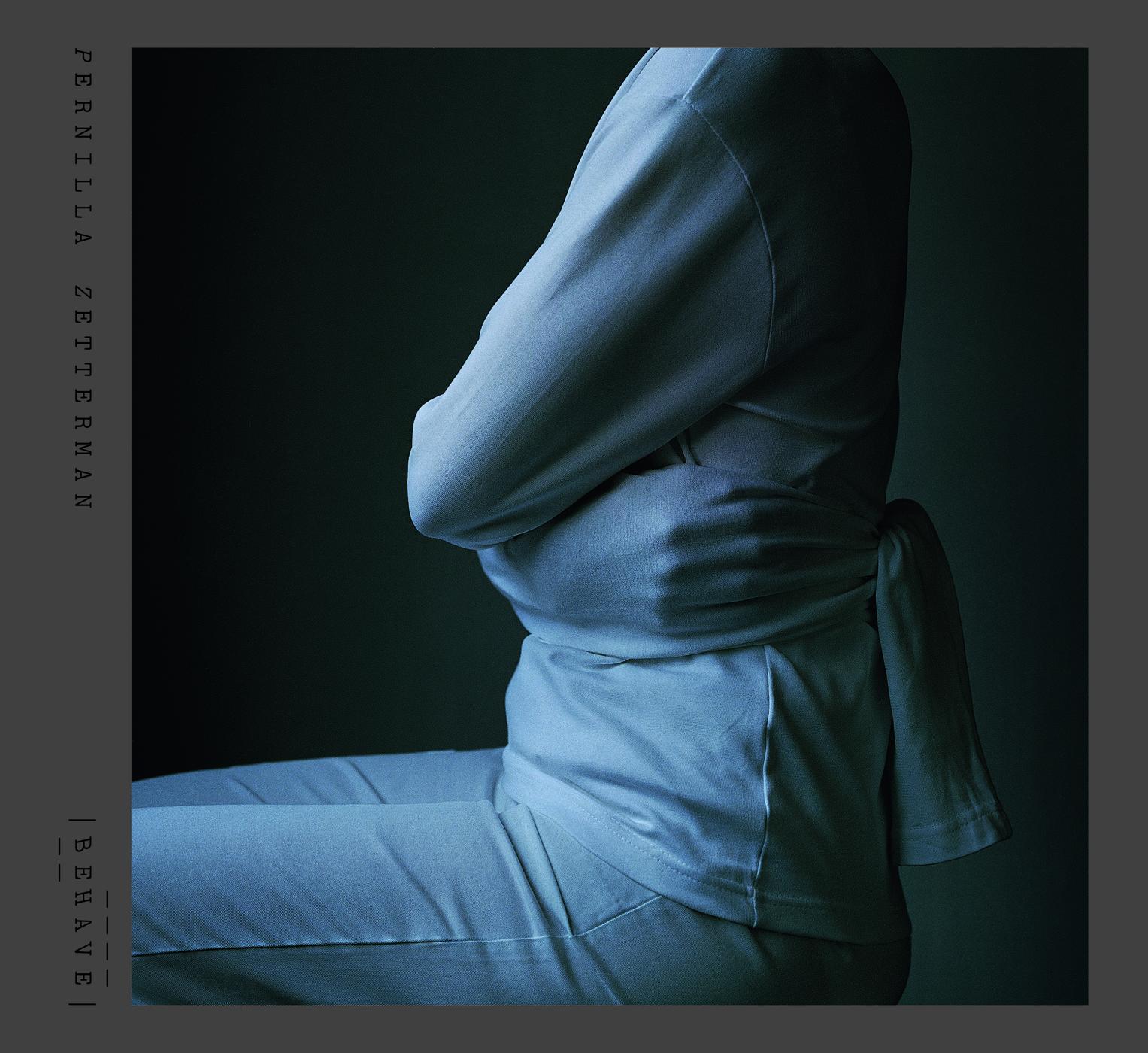Pernilla Zetterman’s My Night Guard neither shows a militia in the seventeenth century under the leadership of Captain Frans Banning Cocq, as depicted in what is perhaps Rembrandt’s most famous painting, The Night Watch, nor does it show the permanent electronic surveillance and comprehensive network the American Lewis Baltz compiles in his novel contemporary history photograph, the twelve-part, twelve-meter-long mural Ronde de Nuit. And yet the orientation of the photograph, from an external to an internal, to a penetrating vigilance is correct engages the same issue Pernilla Zetterman’s book Behave opens with an image of her nighttime retainer which is supposed to prevent inner unrest from manifesting in teeth grinding. Looking at this instrument, one is tempted to diagnose a shift from the external vigilance of the front of the house to one within the house, accompanied by a far-reaching regulation of one’s own insides, a fusion of the individual/physical with the physical control mechanisms. Although that might be somewhat too quickly and facilely argued. Yet there is also this special light which causes the scene, or better yet, the thing, to shine magically in its darker surroundings. “Photographic seventeenth century” comes to mind as a paradoxical exaggeration. Pernilla Zetterman photographs the retainer using directed lighting similar to that adopted by Rembrandt and Caravaggio. The things glow in the darkness and radiate from out of themselves. This lends them an unheard-of magic. Zetterman causes the objects to radiate as though they were the new Audi Quattro, the holy grail of bodily stability, or the key to the unconscious. The blue tint gives them a coolness that we only know today from advertisements and surveillance. The retainer becomes highly ambivalent, an “internal” horseshoe, and a glistening crystal at the same time.
Turning the page, the next verso is black with a second photo on the right-hand page: a seated figure, dressed in light colors, photographed from the side and cropped closely by the camera frame in an almost violent manner so that neither the head nor the lower legs and feet can be seen. This draws our attention directly to the crossed arms and the overly long sleeves knotted behind the back. The figure is tied up in the manner we have come to know from images of psychiatry patients who are being pacified and subdued. At the same time, the figure does not appear contorted but rather sits upright, almost studious. Rigorous, monastic, dressed in fresh, white cotton, it appears to be saying “Yes”, as in the title. One is tempted to add an exclamation mark, since here it appears that someone has brought herself to exclaim “Yes!” with chastened determination. As with the retainer, this image is also ambivalent in its meaning. It connects and reverses external force and internal pressure, freedom of choice and insight into Necessity.
Both pictures are simultaneously reduced and symbolically invested, thereby developing leitmotifs for the entire book. They introduce the subject that the following images develop in a concentrated visual narrative. They formulate the fundamental rules that the subsequent images live by. They are like doormen to the book, the first visualizations of the title “Behave”. This visual language, which peels objects out of their contexts, is only brought into play again in the concluding portion of the book, in the series Ground Rules.
Following this “spectacular” prelude, the mood changes. It becomes lighter, calmer, more deliberate and everyday - or so it seems. All the same, the unspectacular picture My Grandmother’s Photograph appears intended to say something fundamental once more. We observe the photograph of the title from behind and see how painstakingly it has been framed. The photograph and protective glass are held by two clips on each side. A fold-out stand supports the frame in the desired position. However, we don’t see the picture. What is shown is the stage of life; we look at it from behind; we see the background, the construction of the stage, some props and features, some of the scaffolding of life. Similarly, in Giotto’s frescos in the Basilica of Saint Francis of Assisi, we look at the cross from behind, at its suspension, its construction. Pernilla Zetterman is playing with themes of ambivalence this time, with the ambivalence of seeing and not seeing. The triptych Everything Is Fine follows: three photographs that concentrate on three pairs of feet and legs in sparse settings - the legs of chairs, feet, floors. One is tempted to say: naked chair legs, naked floors with naked feet. As in a didactic play by Bertolt Brecht, three generations are shown, their attempts to make a fist out of a foot, to roll in the toes, and to thus control themselves so openly, to behave, is passed from generation to generation. The picture of determination that could almost be (mis)understood as genetic.
Then the light wrapper on a slightly darker surface, a photo that has never been shown before, so the title tells us; then a wad of paper on a light backdrop; an ordered stack of opened envelopes (the peacefulness of the picture is disturbed by the sharp jags of the envelopes, which have been torn open with a finger); the view out of a window through a transparent plastic bag which has been washed and hung up, still wet, with clips. An equally poetic and constricting image, a view outward, a vista which simultaneously threatens to seal itself off from the inside again. Then mother’s handbag, a dark bag placed on the floor, with countless wads of little papers pouring forth; a white power strip with cable, bound together with thread, and finally the image of perfectly ironed sheets, meticulously stacked in a wardrobe. A light, solemn picture containing the repetition of embroidered monograms, an image that appears to speak about great purity, about the attempt to maintain virginity, purity, throughout all the years of life - even if only in the carefully ironed and sun-dried bedclothes.
Taken together, these photographs speak about order and attempts at order, about control and domination as a principle of life. An invisible ruler runs through these works, which not only seems to order the things but also always moves up and down the back as a cringing reminder, an admonition, that we should go through life standing upright, with a straight back, goal-oriented and unerring, and that we should never leave the house in a mess. These photographs appear to be speaking about the part of identity that we call conditioning: the prescribed identity, which imprints itself like a scar, the formatting we go through in childhood, which we then confirm or question as adults. Life: trimmed, polished, combed, and folded, unless it resists. In the sheen of the parquet flooring, the rigidity of life is reflected.
In the images that follow, the picture space opens up; it appears to stretch, to allow for perspective. As though it is expanded by the factor of time. The rotten banana peel on a light, patterned table cloth; later, the two images of an apple that has gone bad, again photographed within a reduced picture space, show an individual piece of fruit on a surface, highlighting time through the traces of spoilage. Two views, on the other hand, gaze past potted plants and curtains into wide-open space, through the window into a wistfully experienced passage of time: faded lettuce in a see-through vegetable drawer; a dried, tightly bound bouquet of flowers, as though still waiting to be presented to someone as a gift; signs of use on, and beneath, a door handle, and on a shower stall, upon which the teeth of time gnaw; the blue monochrome picture of a ribbed washcloth; the triptych of the white, fine bellies of women (Grandmother, Mother, Daughter) that symbolize kinship as much as aging. All these photographs equally deal with time, visualize transformation in time, passage, at the same time attentively following the traces of time. Meanwhile there are ongoing signs of order and clarity - stacks of newspapers, stacks of photographs, stacks of photo boxes - which now, in the process of reading the images and the succession of photographs, gain something compulsive, as though ordered, packed, and cleared away in order to confront time, to hold back the progression of things - or they are at least legible as part of a dense, ceaseless system of self-assurance. A last image, taken at dark, the gaze directed at the asphalt, wet from the rain, through which a black crack cuts like a meaningful line, casts a gloomy shadow on the previously viewed images, on the patterns of behavior represented in them. It seems intended to emphasize the abyss, which is only subtly and lightly and almost unnoticeably manifest in the series of pictures. My Everyday Walk. The title mitigates the image by emphasizing the quotidien quality and aggravates it through the remark that this all happens daily. No pause, no avoidance is possible.
A series of pictures follows that can best be described as a suite, as a short, closed form. The photographs are again as pared back to the essential as at the beginning of the book. They appear mostly in pairs: two arms and hands, one rolled into a fist, the other open; the white lines that appear to slowly emerge from memory, from time, from the snow, and appear in the following as lanes on a running track. White on red, paint on Tartan track. Diverging and converging lanes. The images are consciously composed, constructed; they are intended to communicate freedom and force, love and hate, breeding and accomplishment. In between, two (self) portraits, the artist in the stance of the steely athlete who always has the goal in sight.The suite of images is titled Ground Rules and it comes across like an alphabet, a set of ground rules to be followed if one wants to improve, to prevail over oneself, if one wants to be victorious. In the end, however, the lines trail off, they break rank or form a heart. They take on a life of their own, the fetters come undone, the cage bursts open, the lines are now abstract and form new possibilities.
Pernilla Zetterman operates a camera that constricts the viewfinder, that so clearly extracts individual objects out of the continuum of the visible world that the images sometimes appear almost constructed, staged, partly choreographed. The eye seeks out those things that have a certain meaning, orders them so that they begin to speak about behaviour. Yet never so loud and defined that the visible is exhausted, so that we no longer presume that beneath these visible signs lies a depth, an ultimately fathomless world of determination perhaps, self-determination, inheritance, and conditioning. The artist precedes and re-enacts these small choreographies with pictures that are far more symbolically loaded, which show the way like street lamps, determine the direction, stake out the field, and open the game. The visual-thought-game which entices questions such as ‘How much homeland?’ ‘How much family?’, ‘Can we stand / Do we need?’ ‘How much formatting can freedom tolerate?’ ‘How many railings does our freedom need in order that we can enjoy it without fear?’ ‘How much good behaviour is necessary, and when does it become a burden to us, or abnormal?’ Questions about the regulation and choice of identity, a fragile relationship that must constantly be re-assessed.


